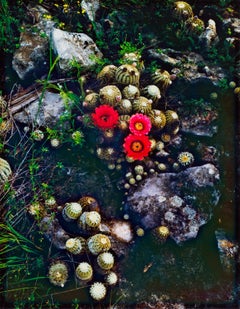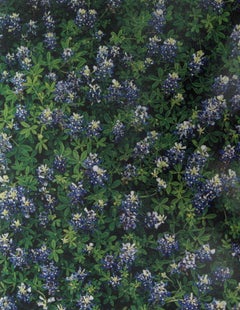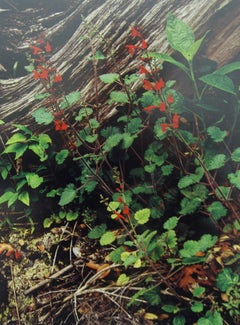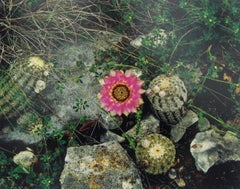Jim Bones Art
to
4
4
Lace Cactus
By Jim Bones
Located in Austin, TX
"Lace Cacuts"
Artist: Jim Brown
Medium: Dye Transfer Print
Size: 15" x 11.5"
Framed
Category
20th Century Jim Bones Art
Materials
Dye Transfer
$1,800
Bluebonnets, Spicewood Springs, Texas
By Jim Bones
Located in Denton, TX
Edition of 30
Signed, titled, dated, and numbered
Artist Copyright Stamp
Texas Wildflower Portfolio 1979
Category
20th Century Post-Modern Jim Bones Art
Materials
Dye Transfer
Cedar Sage, Barton Creek, Texas
By Jim Bones
Located in Denton, TX
Edition of 30
Signed, titled, dated and numbered
Artist Copyright Stamp
Texas Wildflower Portfolio 1979
Category
20th Century Post-Modern Jim Bones Art
Materials
Dye Transfer
Lace Cactus and Yellow Sand, Austin, Texas
By Jim Bones
Located in Denton, TX
Edition of 30
Signed, titled, dated and numbered
Artist Copyright Stamp
Texas Wildflower Portfolio 1979
Category
20th Century Post-Modern Jim Bones Art
Materials
Dye Transfer
Related Items
Time to Save
By Audrey Flack
Located in Fairlawn, OH
Time to Save
From: 12 Photographs: 1973-1983,
Plate 8 of 12
Dye transfer photograph, 1979
Signed in ink
Edition: 50, this example an Artist's Proof (7/10)
Printer: Guy Stricherz
Pu...
Category
1970s Photorealist Jim Bones Art
Materials
Dye Transfer
Kroma: Morpho Godarti Tingomariensis
Located in New York, NY
This image is from the series "Kroma". Pascal Goet looks for flowers, butterflies and other insect of items from the microworlds to attract our attention to the beauty of nature.
P...
Category
2010s Naturalistic Jim Bones Art
Materials
Color, Dye Transfer
Kroma: Ornithoptera Aesacus
Located in New York, NY
This image is from the series "Kroma". Pascal Goet looks for flowers, butterflies and other insect of items from the microworlds to attract our attention to the beauty of nature.
P...
Category
2010s Naturalistic Jim Bones Art
Materials
Color, Dye Transfer
Kroma: Thecla Coronata-M
Located in New York, NY
This image is from the series "Kroma". Pascal Goet looks for flowers, butterflies and other insect of items from the microworlds to attract our attention to the beauty of nature.
P...
Category
2010s Naturalistic Jim Bones Art
Materials
Color, Dye Transfer
Kroma: Ornithoptera Croesus
Located in New York, NY
This image is from the series "Kroma". Pascal Goet looks for flowers, butterflies and other insect of items from the microworlds to attract our attention to the beauty of nature.
P...
Category
2010s Naturalistic Jim Bones Art
Materials
Color, Dye Transfer
Kroma: Thecla Coronata-M-V
Located in New York, NY
This image is from the series "Kroma". Pascal Goet looks for flowers, butterflies and other insect of items from the microworlds to attract our attention to the beauty of nature.
P...
Category
2010s Naturalistic Jim Bones Art
Materials
Color, Dye Transfer
Kroma: Papilio Ulysses
Located in New York, NY
This image is from the series "Kroma". Pascal Goet looks for flowers, butterflies and other insect of items from the microworlds to attract our attention to the beauty of nature.
P...
Category
2010s Naturalistic Jim Bones Art
Materials
Color, Dye Transfer
Kroma: Polyura Dehaani Sulthan
Located in New York, NY
This image is from the series "Kroma". Pascal Goet looks for flowers, butterflies and other insect of items from the microworlds to attract our attention to the beauty of nature.
P...
Category
2010s Naturalistic Jim Bones Art
Materials
Color, Dye Transfer
Kroma: Pterochroza Ocellata II-F-V
Located in New York, NY
This image is from the series "Kroma". Pascal Goet looks for flowers, butterflies and other insect of items from the microworlds to attract our attention to the beauty of nature.
P...
Category
2010s Naturalistic Jim Bones Art
Materials
Color, Dye Transfer
Kroma: Papilio Zalmoxis-R
Located in New York, NY
This image is from the series "Kroma". Pascal Goet looks for flowers, butterflies and other insect of items from the microworlds to attract our attention to the beauty of nature.
P...
Category
2010s Naturalistic Jim Bones Art
Materials
Color, Dye Transfer
Studio 54 Opening Night, New York, NY, 1977
By Robin Rice
Located in Hudson, NY
Listing is for UNFRAMED print. Inquire within for framing.
Edition 1 of 20
After 30 years on West 11th Street, The Robin Rice Gallery celebrates its first ever exhibition for Robin...
Category
1970s Contemporary Jim Bones Art
Materials
Metal
Kroma: Morpho Cypris
Located in New York, NY
This image is from the series "Kroma". Pascal Goet looks for flowers, butterflies and other insect of items from the microworlds to attract our attention ...
Category
2010s Naturalistic Jim Bones Art
Materials
Color, Dye Transfer
Jim Bones art for sale on 1stDibs.
Find a wide variety of authentic Jim Bones art available for sale on 1stDibs. You can also browse by medium to find art by Jim Bones in dye transfer print and more. Not every interior allows for large Jim Bones art, so small editions measuring 10 inches across are available. Customers who are interested in this artist might also find the work of Mikael Levin, Keith Hamilton, and Lee Friedlander. Jim Bones art prices can differ depending upon medium, time period and other attributes. On 1stDibs, the price for these items starts at $1,050 and tops out at $1,800, while the average work can sell for $1,050.





